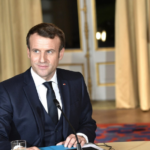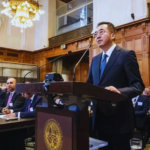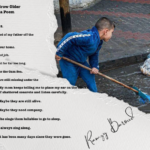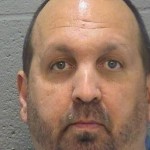Hamas and the trap of Sectarianism

Prior to the so-called Arab Spring, the region was divided in two political camps. One is known as the “axis of resistance,” also the “rejectionist” camp. It consists of Iran, Syria, Hezbollah and Hamas. The other is the camp of “moderates” which pools US regional allies. The latter was positioned to offset the former.
Then, the Sunni-Shia divide existed, but was hardly as pronounced as it is today. The existence of Hamas, a Sunni organization within a largely Shia-group and the clear demarcation of the fight that is between the US-Israel vs. the “axis of resistance” relegated any sectarian difference as insignificant.
Initially, the Arab Spring in 2011 brought ample promise, before it dealt the whole region a massive blow. It wrought war and other bloody conflicts, but also unprecedented political and sectarian polarization.
Hamas, the product of a national liberation movement with a religious ideology of its own, couldn’t escape the sectarian labeling that has suddenly become the litmus test of Middle East politics.
..
Neither side would have allowed Hamas to operate outside the ugly sectarian paradigm anyway. The group was expected to take sides, and quickly. Egypt, under deposed President Mohammed Morsi, which was in a position to mediate a region-based solution to the Syria crisis, also took sides. His move severed any chance of leading a negotiated transition to democracy in Syria.
Meanwhile, Palestinians remained disunited even when their unity mattered most. Even the plight of the large Palestinian refugee population in Syria seemed unworthy of a united Palestinian political front. While small groups fought alongside Damascus, others sided with the opposition. Abbas’s PA remained engaged in an inane ‘peace process’ discourse, paying little attention to the thousands of dead and starving Palestinian refugees in Syria.
Hamas’s maneuvers proved costly. It broke away from the Iran-Syria-Hezbollah axis, joining an Arab front that was united in wanting to see the ousting of the regime of Bashar al-Assad.
But the war grew more grisly on both sides, and the opposition splintered between many groups, including the notoriously violent so-called Islamic State (IS). The calls for democracy and reforms were no longer a dominant discussion as IS declared a Caliphate, and the conflict’s main vocabulary were dominated by sectarian and religious language.
The upheaval in Egypt complicated things further for Hamas. When Morsi was overthrown, Sisi’s backers unleashed a massive war on the Muslim Brotherhood and anyone affiliated with them, Hamas included. Hamas’s gamble didn’t pay off in the least. Further impoverished and isolated, Hamas sought respite by joining forces with Abbas’s Fatah, to end division and seek an outlet from what became a hopeless paradigm.
But things didn’t work as expected ..
– Excerpts from Mending ‘axis of resistance’: Hamas returns to the start. Ramzy Baroud – Middle East Eye










































0 Comments